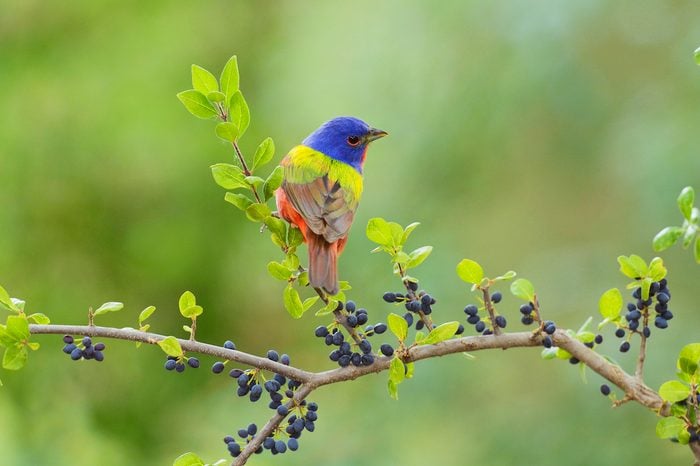
Bunting Bird Species
When it comes to beauty and variety, it’s tough to beat the bunting bird family. They are found in a wide array of North American locations, from the high arctic tundra to the low country of the Southeast. The coloration of these birds is as distinct as their ranges. Males show everything from stark black and white palettes to a rainbow of colors. Females tend to have more subtle hints of coloring. Some buntings are related to sparrows or longspurs, while others are kin to cardinals and grosbeaks, yet another sign of their diversity. Whether you’re lucky enough to spot one at a backyard feeder or need to head to a nearby nature lookout, buntings are worthy of any birding life list. Learn more about these bright birds and where to find them.
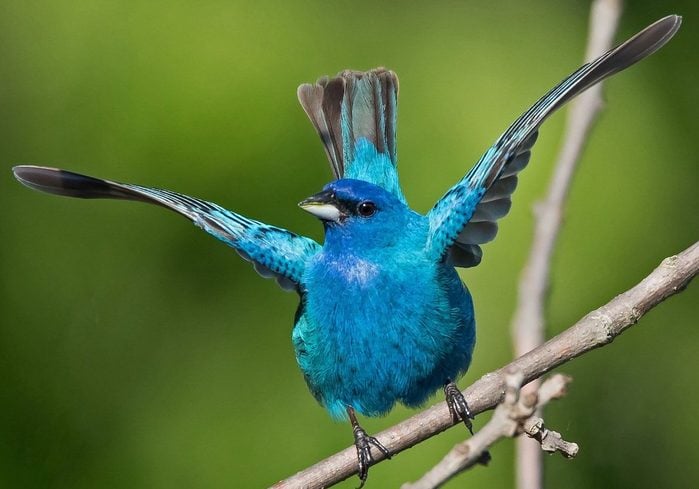
Indigo Bunting
The most widespread group, indigos are the bunting bird of the East. Their core breeding range stretches from southern Quebec to central Florida and west all the way to Arizona and New Mexico. Look for bright blue males singing cheery paired notes from perches in brushy fields or woodland edges. Predominately brown, tan and white, females and young males show hints of blue feathering.
Like most other buntings, male indigos molt into a more subdued winter plumage. During migration, the blotchy birds can play tricks on even the most talented birder’s eyes, as the feather coloring doesn’t match up with anything in field guides. Indigo buntings will occasionally visit seed feeders, so be on the lookout, especially in spring. Offer their favorite foods to attract them.
“In June I was walking down a trail at a local park in Wisconsin. I could hear an indigo bunting singing. In the distance I could hear a faint reply. I focused on the male (above) as he was displaying courtship behavior. As the female’s calls came closer, his wings started flapping,” says Lorri Howski. Check out more inspiring pictures of indigo buntings.
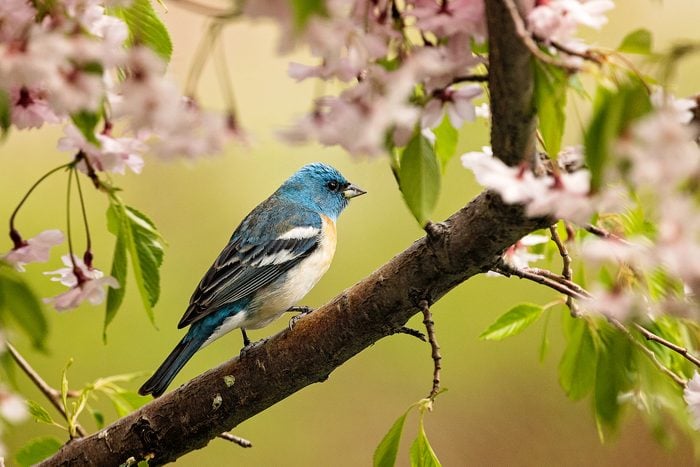
Lazuli Bunting
Search for flashy lazuli buntings throughout the western portion of the United States. Jacelyn Downey, education programs manager for Audubon Rockies, sees lazuli buntings near her Wyoming home close to the Black Hills. “If you’re just glancing, you could easily mistake the male lazuli bunting for an eastern or western bluebird,” she says.
The name lazuli refers to the stunning blue lapis lazuli gemstone. The male’s blue is offset with a rusty brown chest band and a white belly. Wing bars—white in males, buffy cinnamon on the females—help distinguish the lazulis from indigo buntings. Crossbreeding between the two birds is fairly common in the Great Plains where their ranges overlap.
“I have a bird feeder on the tree outside my kitchen window. Last May, I was about to go do some household duties when I saw this lazuli bunting fly to the feeder. They are rare at my house, so I grabbed my camera. As soon as he flew to the tree, I grabbed this shot (above), which was good because the next second he flew away!” says Emily Hamson.
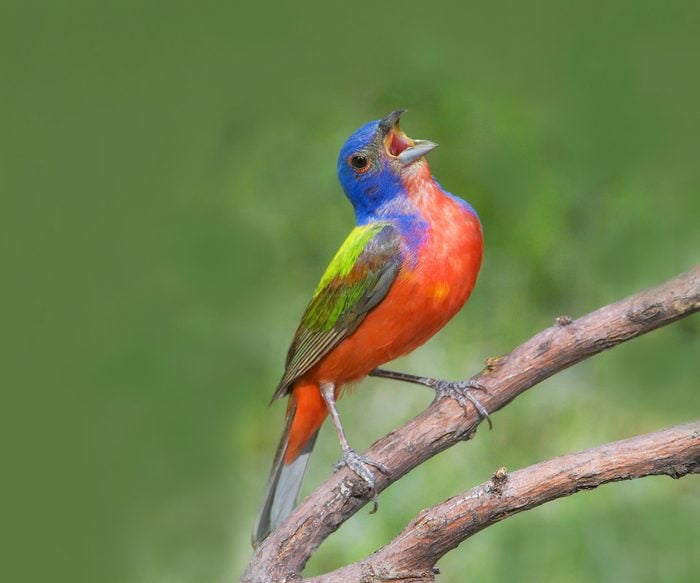
Painted Bunting
Jacelyn occasionally would see colorful painted buntings, with feathers in shades of blue, green, red and yellow, when she lived in Louisiana. “You can’t fully appreciate them in the shade. But when the light hits the males just right, you wonder why all birds don’t look like that,” she says. The main breeding range of painted buntings is the south-central United States. Additionally, an eastern population nests from coastal North Carolina to central Florida. Painteds may winter from southern Florida to Panama.
The birds often forage in dense stands of vegetation but can sometimes be seen out in the open at feeding stations, where they’ll eat thistle or white millet seed. “It seems like in so many cases, we’ve trained our brains to think that the way a bird looks is the male version of the species,” Jacelyn says. But females and young male painted buntings are also appealing with feathers that have a greenish tint.
“Painted buntings are an all-time favorite for bird enthusiasts. I particularly love their gorgeous song and how they love to show it off. This photo (above) shows how tenacious a singing painted bunting can be,” says Tim Vasquez of San Angelo, Texas.
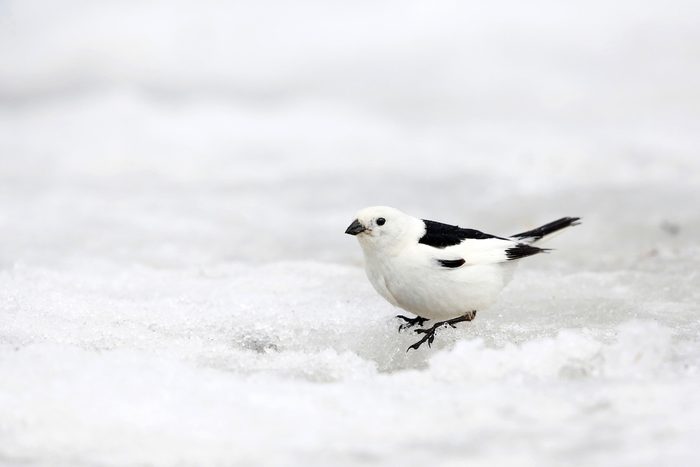
Snow Bunting
Snow buntings, which are white with black accents, breed from coast to coast but only in the far north, from eastern Canada’s Newfoundland and Labrador province all the way over to Alaska. In winter, they move south in great numbers. Some years they are spotted as far south as Oklahoma and Arkansas. Jacelyn most often encounters these cold-hardy fliers in roadside flocks. “To me, snow buntings are quintessential during Christmas Bird Counts, even though we only track them down about half the time on our eastern Wyoming routes,” she says.
Snow buntings occasionally gather to eat off the ground under feeders in a junco-like manner. Otherwise, look for them in open fields, roadside ditches, and along lakeshores.
Psst—don’t miss these wonderful winter bird photos.
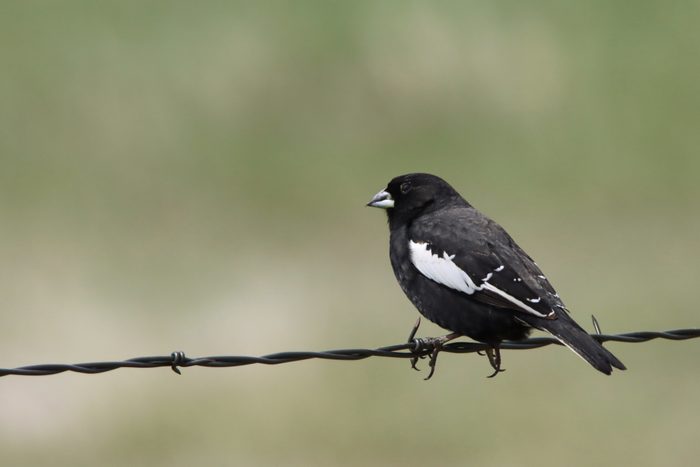
Lark Bunting
Though lark buntings lack the colorful flair of other bunting bird species, the bold black-and-white pattern of the males is still quite striking. Jacelyn refers to this species as the “fluttery birds,” saying they “always fly just a little out of reach.” Jacelyn points out that the striped brown female lark buntings look so different from the males that you may not even think they are the same species. She suggests looking for white wing patches when identifying females or male lark buntings during nonbreeding season.
Learn about prairie birds: the stunning species of the Grasslands.
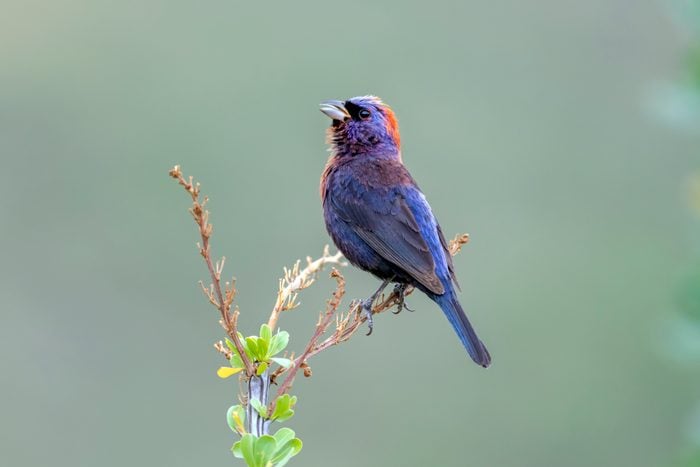
Varied Bunting
More widespread in Mexico, the varied bunting has a restricted range in the southwestern United States. Look for this bird in streamside habitats in the canyons along the borderlands. Breeding occurs in early summer in Texas. In Arizona, the nesting matches up to the rainy season in August. Varied buntings look similar to indigos, but they are even more richly colored. Males can appear nearly purple with reddish highlights along the back of the head and the throat. Females and young males are a soft gray-brown hue. Look for especially thick and curved bills on varieds, too.
Discover the desert birds of the Southwest
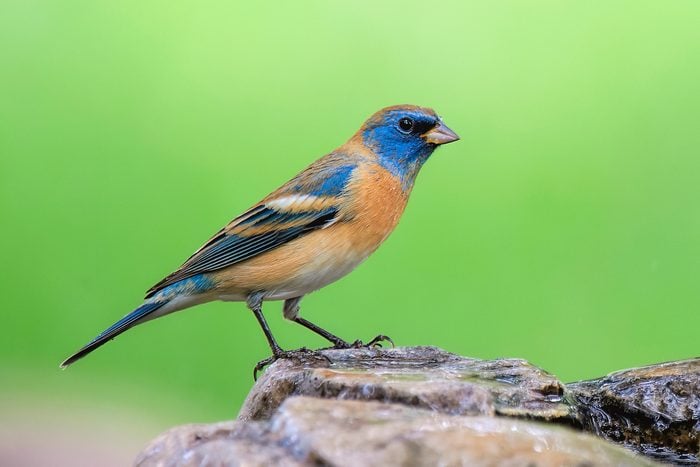
Bunting Bird Hot Spots
Head to one of these locations for prime birding opportunities.
- Indigo bunting: Cuyahoga Valley National Park, Ohio
- Lazuli bunting: Glacier National Park, Montana
- Painted bunting: Holla Bend National Wildlife Refuge, Arkansas
- Lark bunting: Pawnee National Grassland, Colorado
- Snow bunting: Arctic National Wildlife Refuge, Alaska
- Varied bunting: Big Bend National Park, Texas
Next, check out 4 vibrant tanager bird species you should know.
